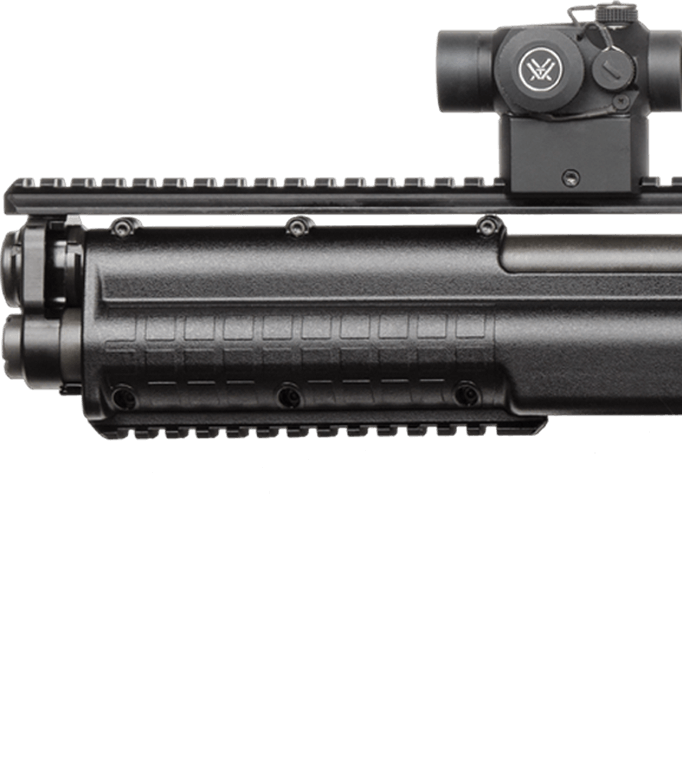Safety ranks as a top priority when handling firearms. With 42% of American households owning at least one firearm, it’s critical to take care of these tools. Whether you hunt, train at the shooting range, or have a personal collection, you have an obligation as a responsible gun owner to maintain your firearm. With any firearm use, debris and other particles build up in the action and barrel. This can cause jams, misfires, or even case ruptures. No matter your experience, learn from these instructions on how to safely, thoroughly and efficiently clean your firearm.
Prepare Your Cleaning Station
To begin, consider your cleaning area. Well-ventilated areas like an open garage or outdoor space work best, since firearm cleaning supplies often include solvents. A proper gun mat can protect your work surface and Latex or nitrile gloves and safety goggles protect your skin and eyes. Gather your cleaning supplies before you disassemble your gun. These supplies include a caliber-specific bore brush or snake, gun-friendly solvent, microfiber or lint-free cloths, swabbing patches, patch pullers, cotton swabs and lubricant. For easy set-up, keep all of these supplies in a consistent, safe place to use whenever you need them.
Unload and Disassemble the Firearm
After you’ve set up your cleaning area, make absolutely sure your firearms are clear of any ammunition. Both visually and physically check the firearm you are about to disassemble is unloaded and that the chamber is empty before you take it apart. This is vital for firearm safety. Additionally, you should also review and consult the owner’s manual for instructions on disassembling your firearm if you are unfamiliar with it.
Clean Out the Barrel & Action
Your biggest task when maintaining your firearm is cleaning the barrel. Start by running a bore brush coated in gun-specific solvent through the barrel to dislodge debris. You can also use a patch and patch puller for this step. Either way, leave the solvent in the barrel for approximately 10 minutes. Afterward, you’ll want to use the bore brush or rod & patch to assist the solvent before using a new patch or dry brush to ensure the barrel is completely dry and clean. Repeat this process as necessary. When finished cleaning the uninstalled barrel, it is imperative that you ensure there is nothing blocking the bore. Look through the bore and make sure you didn’t leave a cleaning patch or brush in your barrel. As for the slide or bolt assembly and feed ramp(s), use a quality nylon brush and the same gun solvent to clean off any carbon and other build-up. Spray, scrub and wipe with a cloth until the components are thoroughly clean.
Take Care of Smaller Parts
A firearm’s small pieces also deserve careful attention. This includes your trigger group, recoil system and magwell, as well as the trigger itself, hammer, ejector and extractor assemblies. You can use a microfiber cloth, nylon brush or cotton swab to clean off any build-up, then follow up with a nylon brush saturated with solvent. Once the solvent has had time to break down the carbon, compressed air works wonders for blowing out remaining debris and solvent. Then, run a brush, patch, or cloth over all of these parts to wipe them clean.
Lubricate as Needed
Lubricating your firearm’s essential places gives the components longevity and reliability. You don’t want contact points wearing down and harming the lifespan and value of your firearm. Lubricate areas where friction occurs, but remember not to overdo it, since too much lubrication can collect excessive debris. For small pieces, apply the lubricant with a clean swab. Afterward, wipe off any excess. If necessary, you can dab more on later when you check the firearm’s functionality.
Reassemble
After the firearm’s parts are appropriately cleaned and lubricated, reassemble it. If you want, you can wipe down the exterior with a lint-free, microfiber or reel cloth. Opting for a reel cloth, which is often treated with silicone lubricant, will give a protective coating to your firearm’s exterior. Finally, check the functionality of your firearm while it is UNLOADED and with an EMPTY CHAMBER. Once you feel confident that you’ve cleaned your firearm to the best of your ability, you are ready to store it in a safe place.
Practices That Keep You Safe
Responsible firearm ownership includes establishing a cleaning routine for your firearm. Firearms serve as a means of protection for you and your loved ones, but this purpose falters when you don’t clean your firearms on a regular basis. At KelTec, our team believes everyone who uses a firearm should feel confident and prepared to follow safety principles, including cleaning. If you have questions about our innovative collection of firearms or want more advice, feel free to contact us, check out our website or read more in our other blogs.





